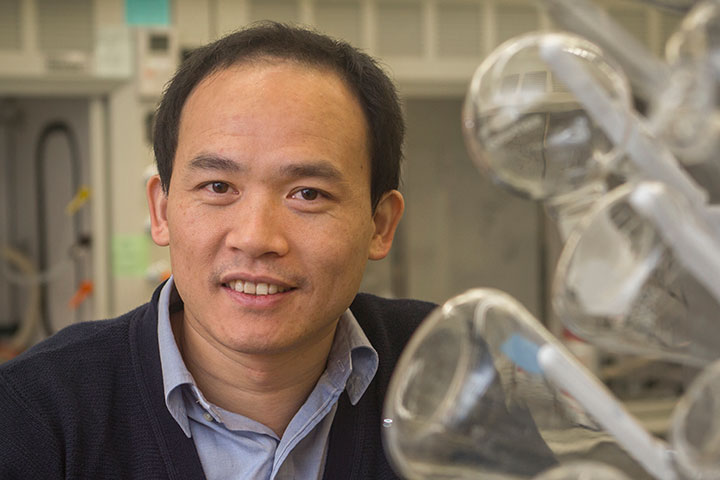
A Florida State University research team has discovered that a unique organic-inorganic compound containing zero-dimensional molecular clusters emits a highly efficient blue light.
The new discovery is reported in the Journal of the American Chemical Society.
Associate Professor of Chemistry and Biochemistry Biwu Ma has been working with an emerging class of functional materials that are organic-inorganic metal halide hybrids. A typical metal halide hybrid contains metal and halogen, and another component that can be either organic or inorganic.
Ma describes these metal halide hybrids as materials built from Lego-like pieces because they can be assembled by using the same chemical building blocks — metal halide octahedrons.
“Basically, all these materials have the same building blocks.” Ma said. “What we have been working on is to find the chemistry to put these Lego pieces together to form different configurations and then explore their distinct properties — such as luminescence — that accompany these configurations.”
Previously, Ma’s group has reported metal halide layers, wires and tubes using these building blocks.
The newly developed single crystalline assembly of metal halide clusters has a highly efficient blue emission — the essential color for solid state lighting and full color display applications.
It has more than 80 percent efficiency, meaning it could potentially be developed for use in photon-related technologies like lasers or light-emitting diodes.
“It has fantastic photophysical properties,” Ma said. “This quantum efficiency is actually among the highest values reported to date for single crystalline blue light emitters.”
Ma’s co-authors on the paper are graduate students Chenkun Zhou, Michael Worku, Jennifer Neu, Yan Zhou, Yu Tian and Sujin Lee, postdoctoral researcher Haoran Lin; Professor Theo Siegrist; and Peter Djurovich, a research professor from University of Southern California.
This work is supported by the National Science Foundation and the Air Force Office of Scientific Research.




